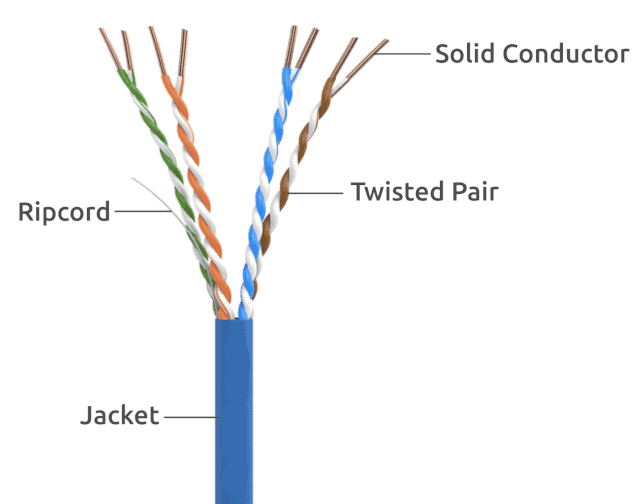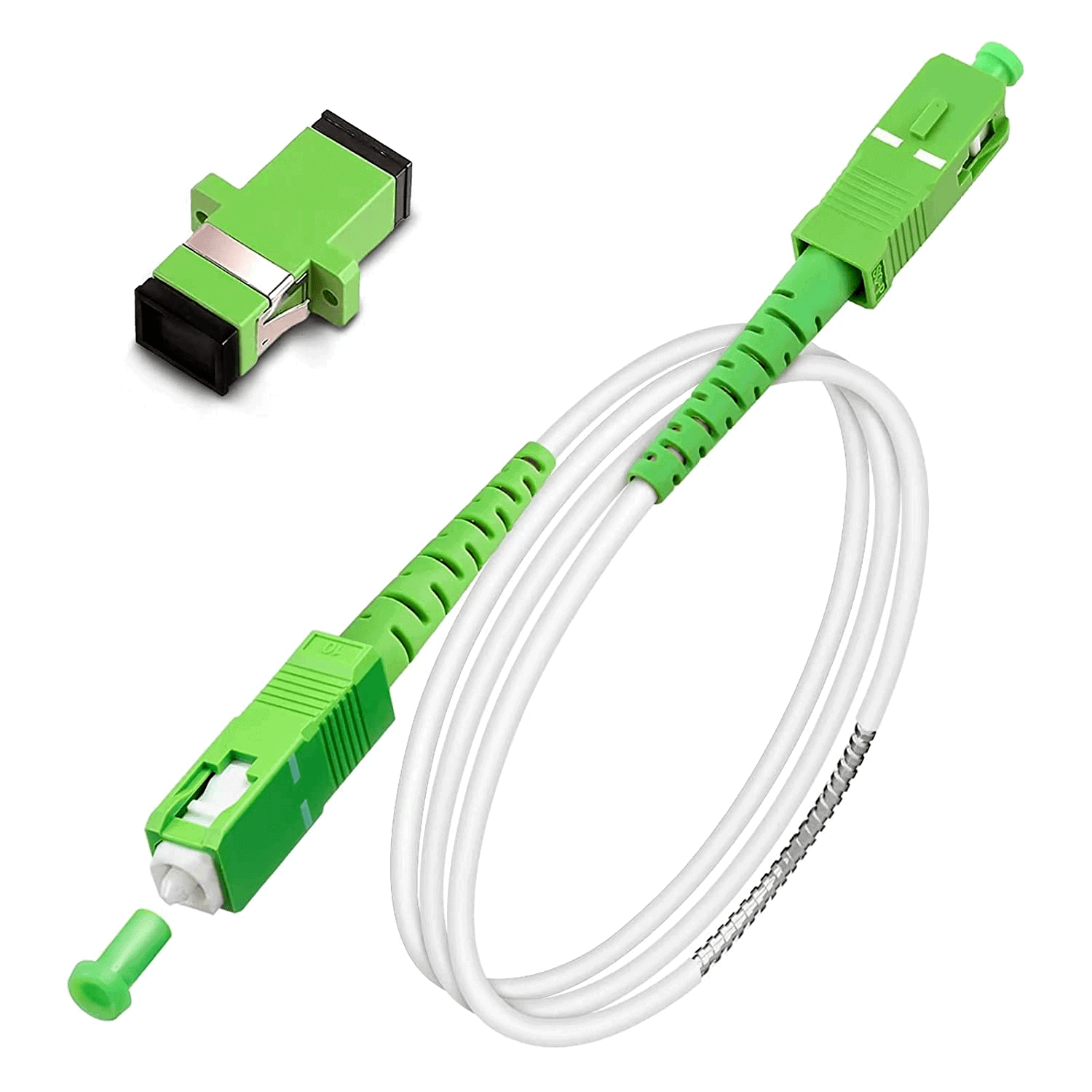1. Introduction
In this tutorial, we’ll learn the difference between Ethernet and UTP Cables. Initially, we’ll understand what a UTP cable is, its main characteristics, and its function in a network. After that, we’ll clarify what Ethernet is and how it relates to these cables.
2. Understanding UTP Cable
Due to their cost-effectiveness, Unshielded Twisted Pair (UTP) cables are the most widely used cables in computer networks today. They consist of four twisted pairs of unshielded copper wires on the inside, protected by an outer jacket. A cable’s shield protects against electromagnetic interference (EMI) and electrical noise, among other things. The interlacing of the wires makes it possible for the UTP cable to suppress low rates of EMI and electrical, even without the shielding layer:

This is a picture of a UTP Cable sold by Syston Cable Technology. Here, we identify all the parts of the UTP cable.
2.1. What Do We Use UTP For?
Local computer networks (LAN) require low cost, simplicity of deployment and maintenance, and flexibility. Thus, these LAN networks usually use UTP cables because they’re cheaper and more manageable than other cables due to not having the shielding layer.
However, this same characteristic imposes limitations on their use. They’re unsuitable for environments with EMI or even humidity. For example, we shouldn’t expose them to the sun or rain for too long. Also, the maximum recommended distance for use is 100m, after which its transfer rate is no longer guaranteed.
Devices such as computers, printers, and game consoles use UTP cables to connect to modems/routers and the Internet. Similarly, since they can transfer audio and video signals, we can use UTP cables in surveillance and security systems in components such as DVRs (Digital Video Recorders) and automation and control systems.
3. What’s an Ethernet Cable?
The Ethernet is a protocol used to connect home or business networks, i.e., to transfer data between devices or multiple networks.
The data we transmit needs to be in the specified format. We can transfer the most diverse types of information, from a phone call or a video stream to a banking transaction. So, an Ethernet cable is any cable we use for Ethernet.
Bob Metcalfe and David Boggs built the first Ethernet network in the 1970s, using a thick coaxial cable and operating at a rate of 3Mbps. Today, we use UTP cables and fiber optics. Fiber optics has at its core a glass fiber through which a light signal propagates, a peripheral layer called the shell, which surrounds the core, confines and guides the light. Another layer of coating (or primary coating) protects it against mechanical shock and excessive bending, usually of acrylate:

This is an example image of another Ethernet Cable, a Fiber Optic sold by eBay. Fiber optics is a different technology from twisted pair cables and has several benefits. One is immunity to EMI since the transmitted signal is a ray of light and reaches greater transmission distances. For instance, a single-mode fiber can send a signal up to 80 km away at 100Gbps.
3.1. Other Examples of Ethernet Cables
There are many different types of Ethernet cables with and without shielding:
- U/FTP relies only on individual shielding by a metal foil.
- F/UTP has only global shielding through a metallic sheet that surrounds the entire cable and remains between the internal wires and the external layer.
- F/FTP is similar to the previous one, but in addition, it has individual shielding in pairs, also with metallic foil.
- S/FTP has global shielding given through a mesh of metallic wires (copper, aluminum, etc.) and individual shielding with metallic foil.
Another type of cable in Ethernet networks is Twinax. We use it in data centers to connect network devices such as servers over short distances. These are copper cables and are usually only 3m long. Although they have the same composition as UTP cables, their transfer rate capacity is similar to that of common fiber optics (10Gbps).
4. Comparison
Here’s the summary of differences between UTP and two other Ethernet cables:
Cable
Composition
Protection EMI
Distance
Transmission Rate
Ethernet Protocol
UTP
Copper
No
100m
1GBASE-T
Gigabit Ethernet
S/FTP
Copper
Yes
30m
40GBASE-T
40 Gigabit Ethernet
Fiber optics
Glass
Immunity to EMI
80km
100GBASE-ZR
100 Gigabit Ethernet
5. Conclusion
In this article, we studied the UTP and Ethernet cables: what they’re and what we use them for.
Simply, Ethernet is the most common way of using a UTP cable. So, we can use other types of cables for Ethernet, such as fiber optics. Similarly, we can use UTP cables in networks other than Ethernet, such as surveillance networks.